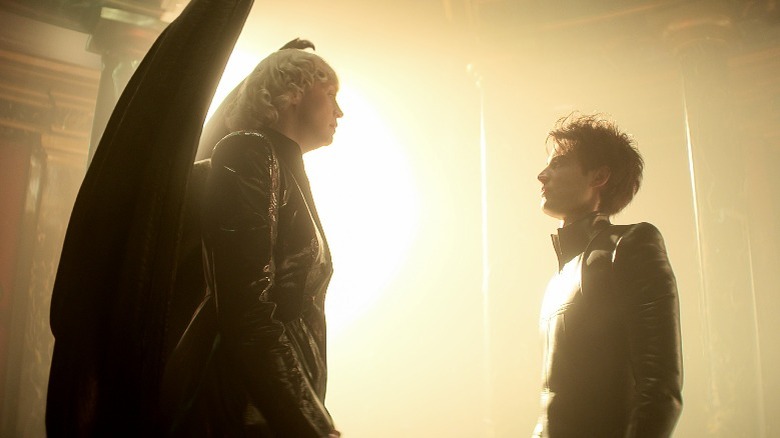The Sandman & Lucifer Series Are Loosely Connected - But Only Real Fans Know How
Netflix's "The Sandman" serves as a direct adaptation of Neil Gaiman's prolific comic book series of the same name, centering around Morpheus/Dream (Tom Sturridge) — the personification of dreams and one of seven immensely powerful beings known as the Endless. Season 1 of "The Sandman" focuses primarily on Morpheus' 106-year imprisonment by the occultist Roderick Burgess (Charles Dance), and his subsequent attempts to reclaim his possessions after escaping.
One of Morpheus' most prized possessions is his immensely powerful helmet, and in Episode 4, "A Hope in Hell," he is forced to enter Hell itself to retrieve it from Lucifer Morningstar (Gwendoline Christie). Diehard "Sandman" fans will know that this version of Lucifer is directly connected to the character of the same name from the Tom Ellis-led fantasy series "Lucifer" — since both characters are technically the same person, adapted from the Lucifer Morningstar of the original "Sandman" comic book series.
Neil Gaiman's version of Lucifer was introduced in "Sandman" (Volume 2) #4 and played a major role in "Sandman" (Volume 2) #23, the latter of which saw him abandon his rulership of Hell after millennia of boredom and dissatisfaction. Netflix's "Lucifer" adapts the story of what happened after Lucifer Morningstar (Ellis) abandoned Hell to live on Earth, while "The Sandman" has yet to reach that point in the story.
The characters are technically the same, but have some major differences
Although Lucifer Morningstar from "The Sandman" and Lucifer Morningstar from "Lucifer" are technically the same character (or are at least based upon the same character from the comics), it's worth noting that the latter made some pretty dramatic changes to the character's comic book storyline.
The solo comic book series "Lucifer" continues the story of Lucifer Morningstar after his departure from Hell in "Sandman" (Volume 2) #23, in which the fallen angel finds his retirement plagued by powerful otherworldly beings from his past. Eventually, he decides to create a multiverse of his own design to try and start over, and focuses on finding a way outside of his father's creations. By contrast, Netflix's "Lucifer" is much more grounded, with the newly-retired Lucifer Morningstar setting up a club in Los Angeles and solving supernatural mysteries for the LAPD.
As of right now, it seems like the "Sandman" version of Lucifer is more in line with the comic book version of the character than her "Lucifer" counterpart, and it will be interesting to see where the television series takes her story after her departure from Hell. In any case, it's clear that these two characters are extremely different, even if they're both based on Neil Gaiman's comic book version of Lucifer Morningstar.

